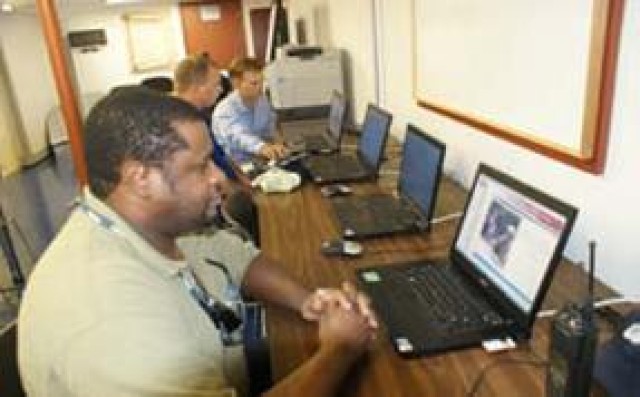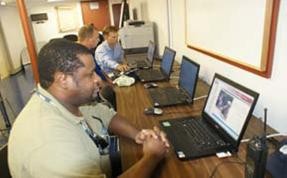The Army Field Support Battalion - Northeast Asia's mission is to receive, store, maintain accountability of Army prepositioned stocks throughout Korea, Japan and Okinawa, making sure there exists no risk to the combat readiness of the equipment and continually improve the "fight tonight" status. In achieving the mission, AFSBn-NEA maintains the combat equipment and constantly manages the flow of equipment moving in and out of the warehouses. During the process, there could be delayed transportation, mechanics waiting, extra-processing and unutilized work force slowing down the flow of work. In order to eliminate waste and maximize the process, AFSBn-NEA requires its employees such as Department of the Army workers, military members, Korean nationals and contractor work forces to attain a basic understanding of the Lean Six Sigma program. With an understanding of Lean Six Sigma by the workers, AFSBn-NEA works efficiently in improving the speed of work, cost efficiency, and quality.
The Lean Six Sigma methodology is a combination of the Lean concept, which seeks to eliminate waste by focusing on maximizing process velocity, and the Six Sigma method, which looks to prevent variations, errors and defects through data driven decisions. But in order for AFSBn-NEA workers to attain certification, which begins with the Yellow Belt, then Green, Black and Master Black, they must learn and be tested. While some employees have the time and access to computers, there are approximately 200 Korean employees who work mostly on-site that have difficulty gaining such time and access.
In providing a place for those employees to learn and train on the Lean Six Sigma program, AFSBn-NEA established the Continuous Improvement Centurion Learning Center Aug. 31 in warehouse 10A. Roland Descoteaux, AFSBn-NEA Continuous Improvement Division Director said, "The idea is to have a centrally located multi-functional area that allows AFSBn-NEA employees access to technology to complete their required Yellow Belt awareness training." The Centurion Learning Center provides a classroom, conference area, and an area for project teams to work on their projects and conduct project reviews. In other words, "it is a place where ideas for improvements can be generated," said Descoteaux.
Yi Chin Sang, AFSBn-NEA Continuous Improvement Division assistant chief, a Black Belt himself said, "The goal is to have 100 percent of the employees at least a yellow belt. I plan on instructing a four-day training event for the Korean workers, process maps, flow charts and using Lean tools and exercises." The Yellow Belt can be attained in about four days of training and a test. But as the level gets higher, it becomes longer and more difficult to complete the training. Beginning with the Green Belt, an individual project must be completed along with a two-week course and four weeks for the Black Belt.
The Centurion Learning Center used to be a break room but Descoteaux and Yi realized the space was being put to waste. "It is our hope that this facility will become well utilized in the days, months and years ahead, not just for Lean Six Sigma use exclusively, but for other Continuous Improvement activities and provide access to the Defense Acquisition University online and other training classes for small groups up to 20 students," said Descoteaux. As the Lean Six Sigma principles of eliminating waste and reducing variations and improving processes goes, what a good way for AFSBn-NEA to eliminate wasted space and convert it to a productive learning center, ensuring combat readiness for the U.S. and the Republic of Korea.


Social Sharing